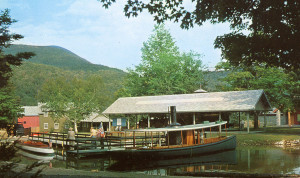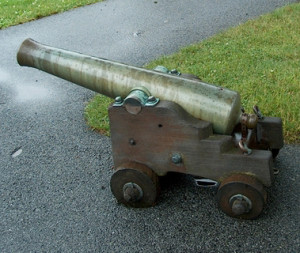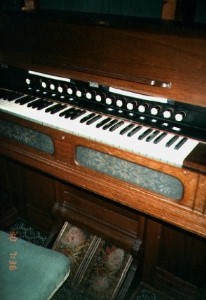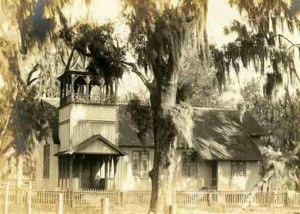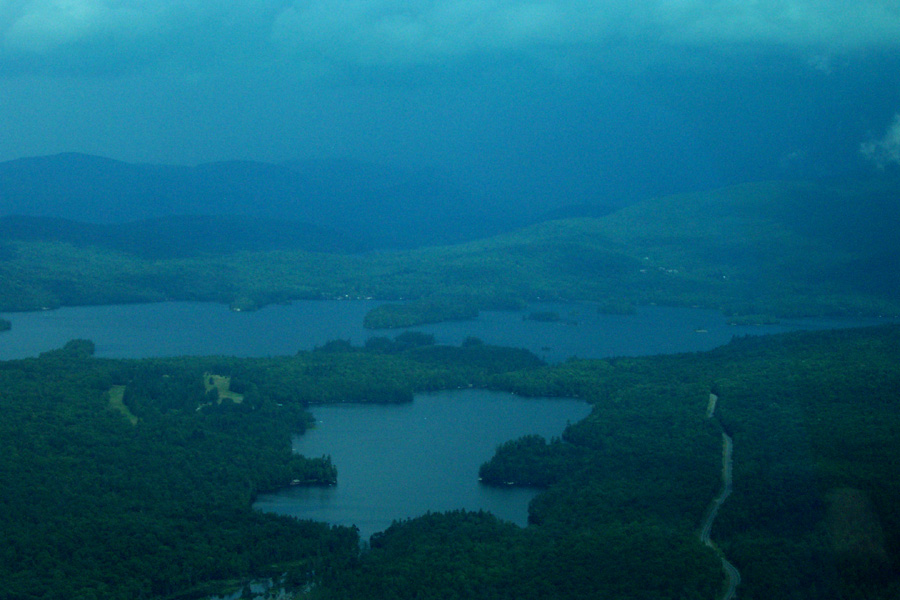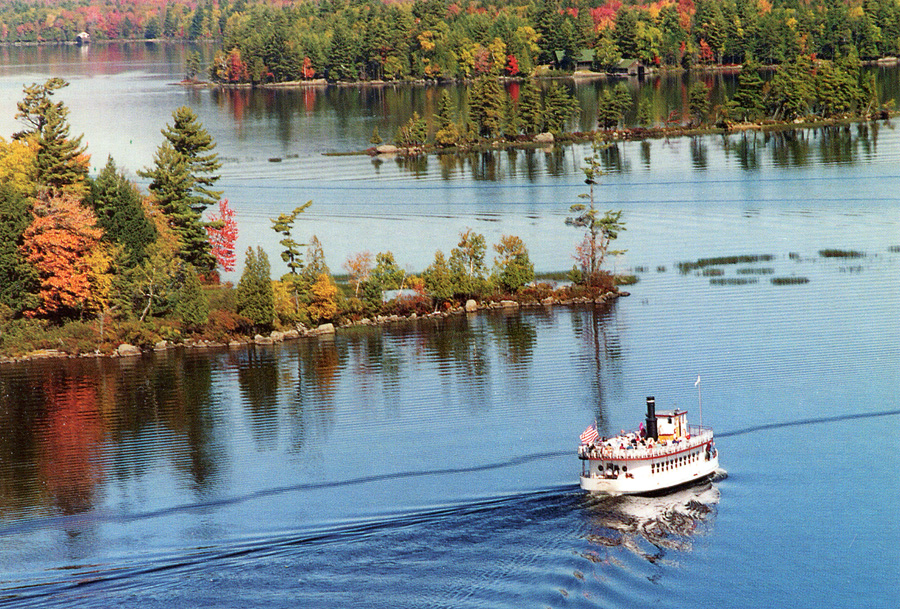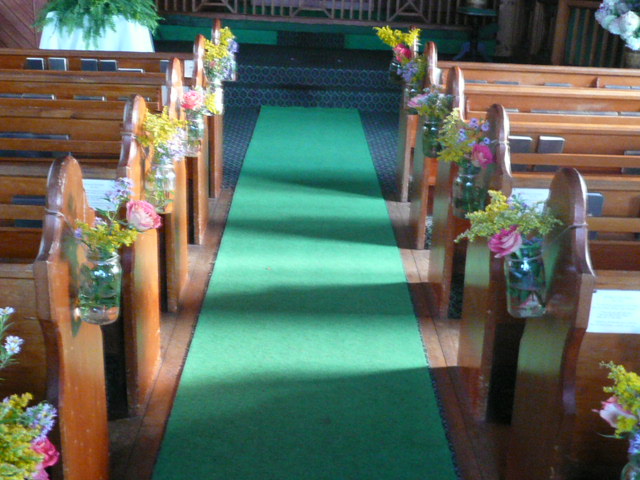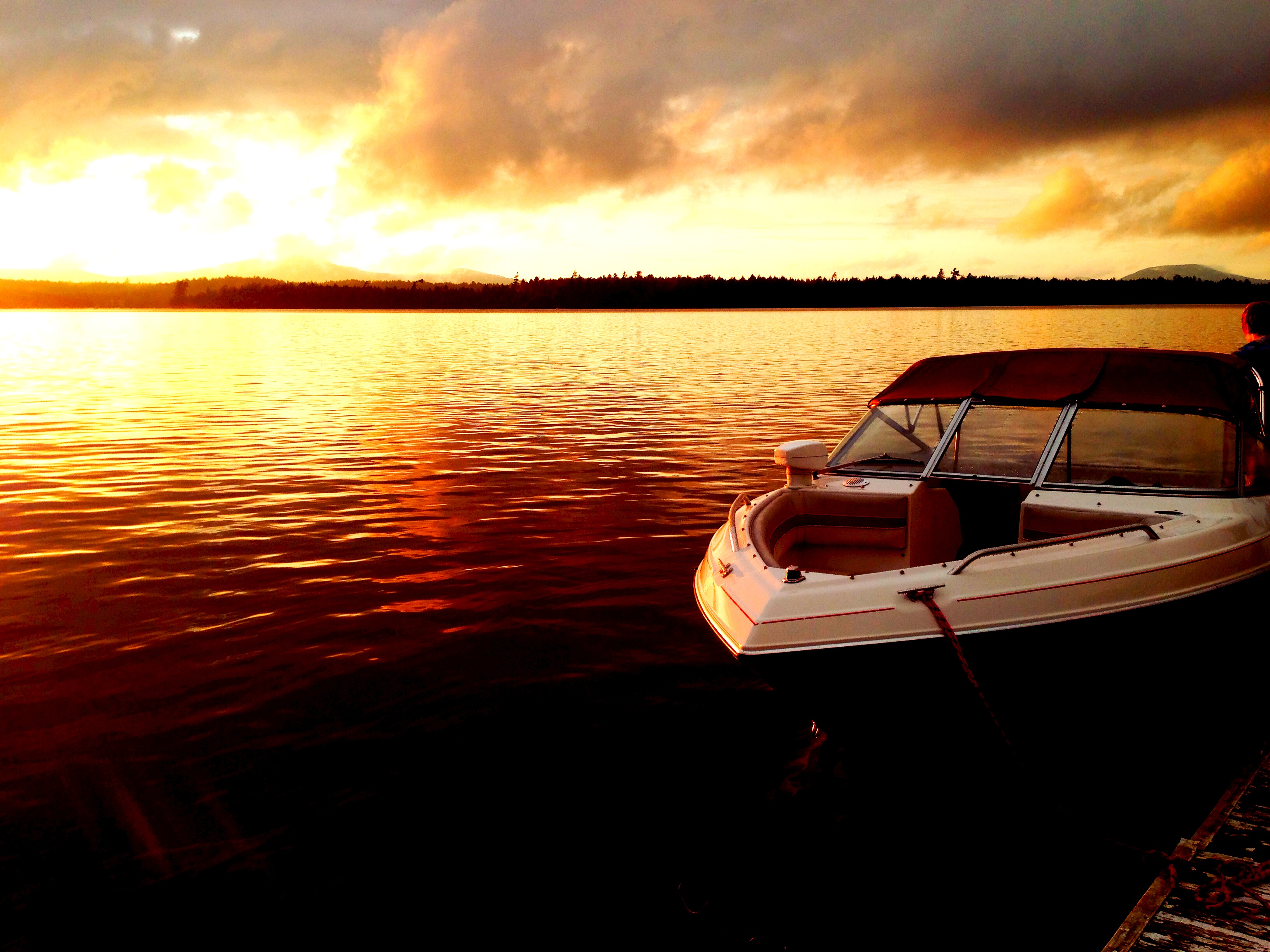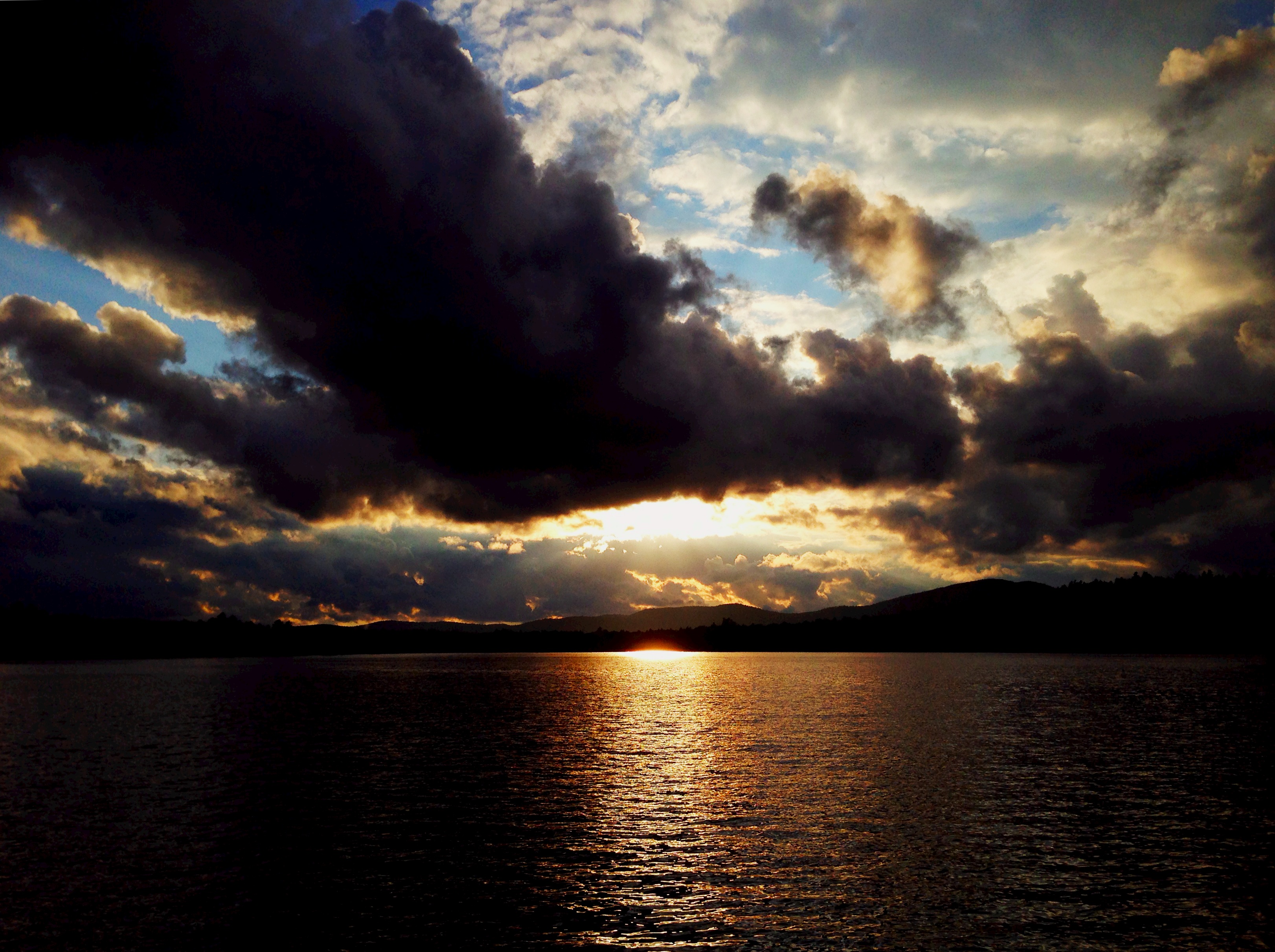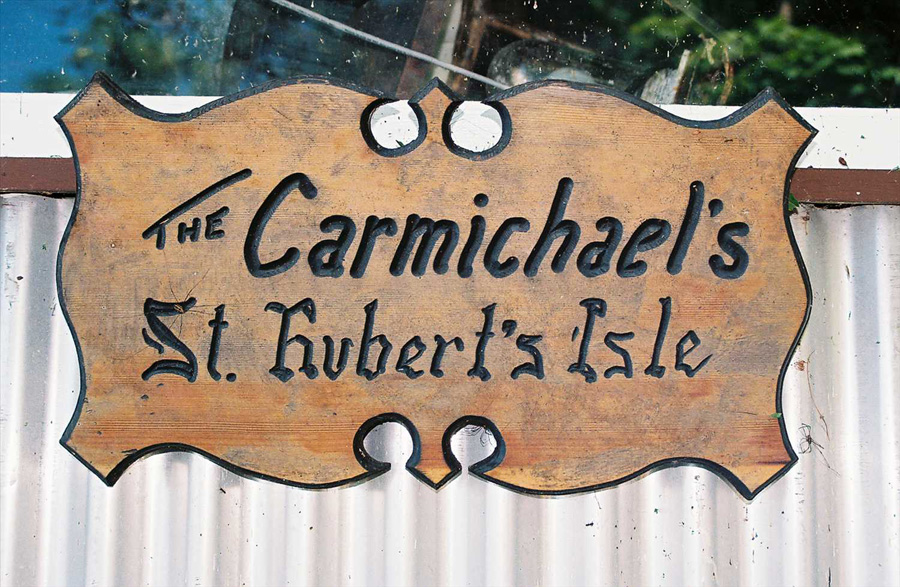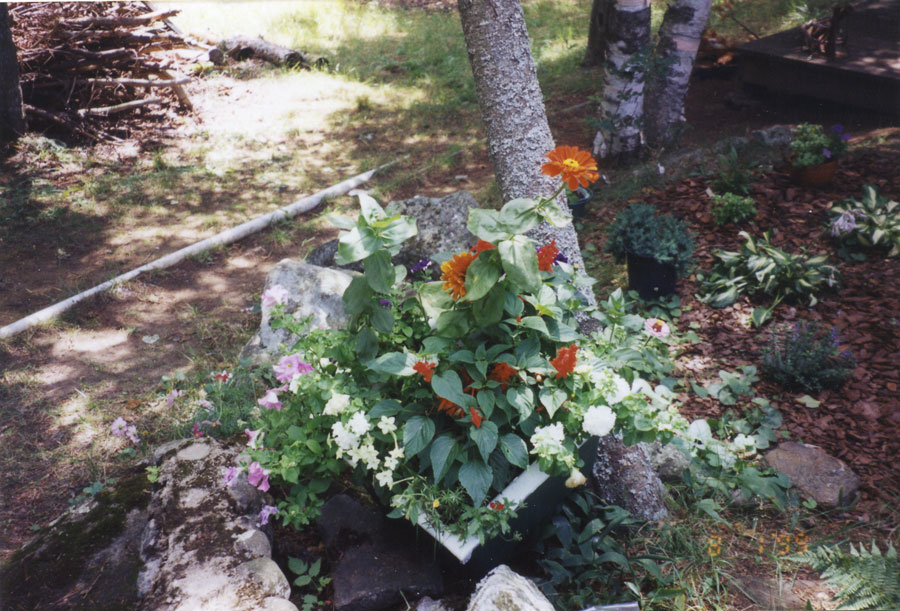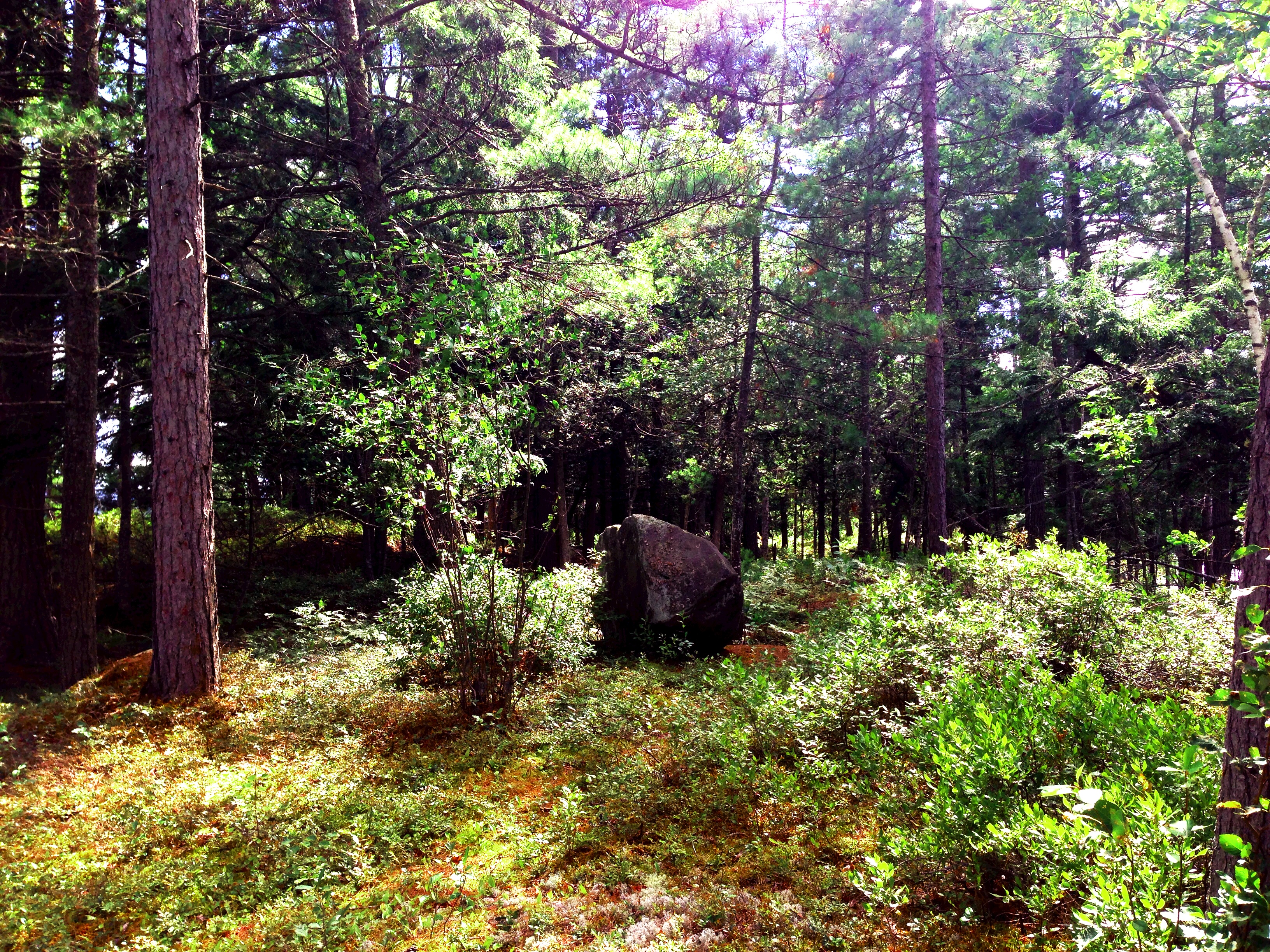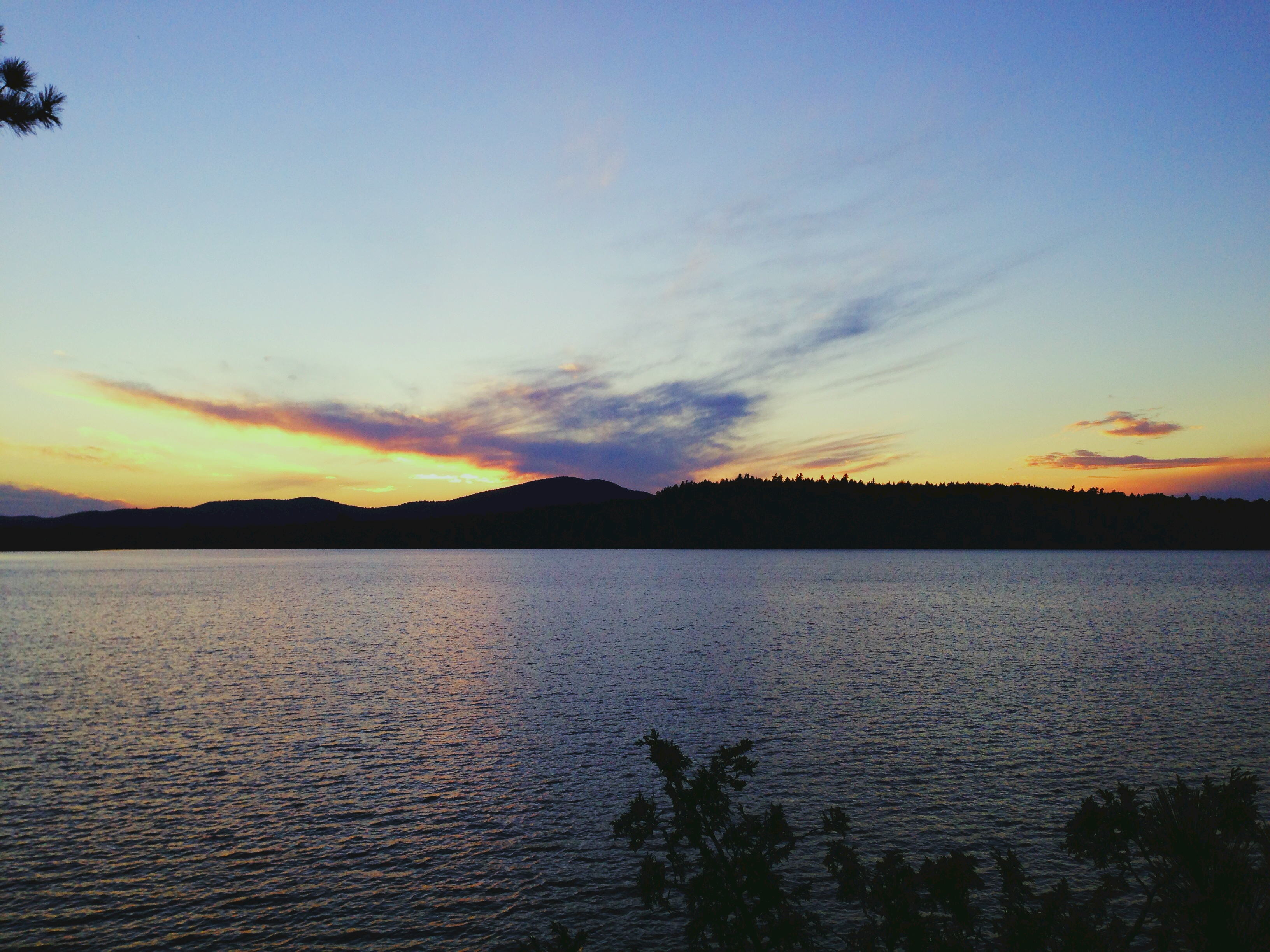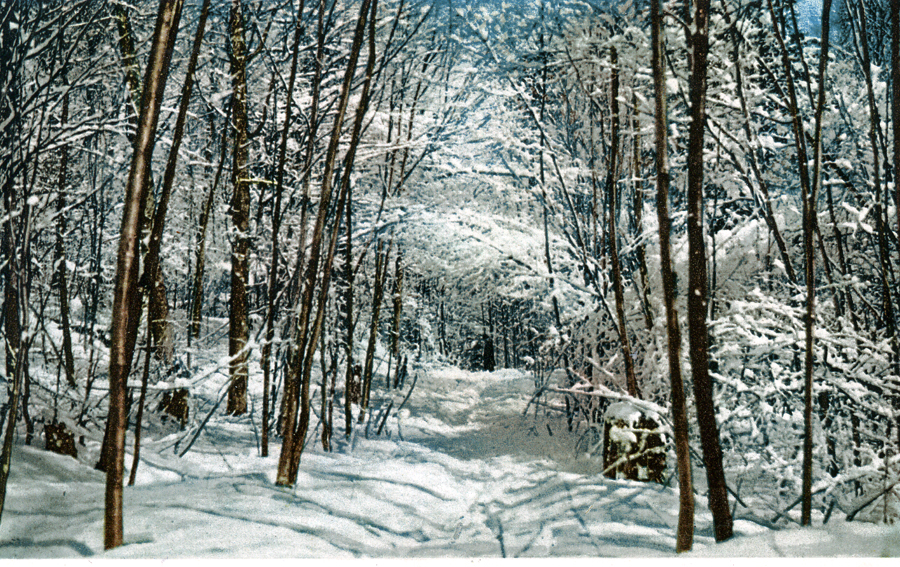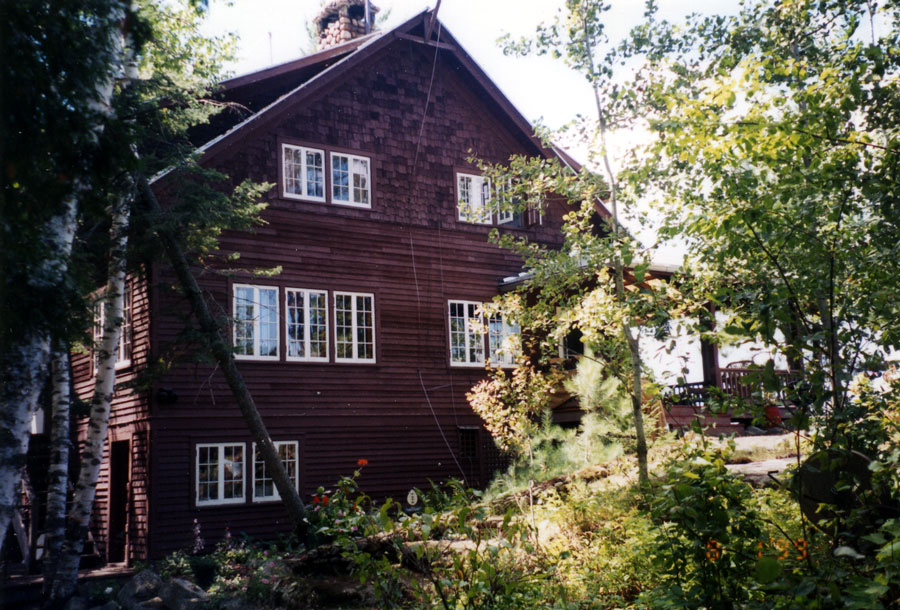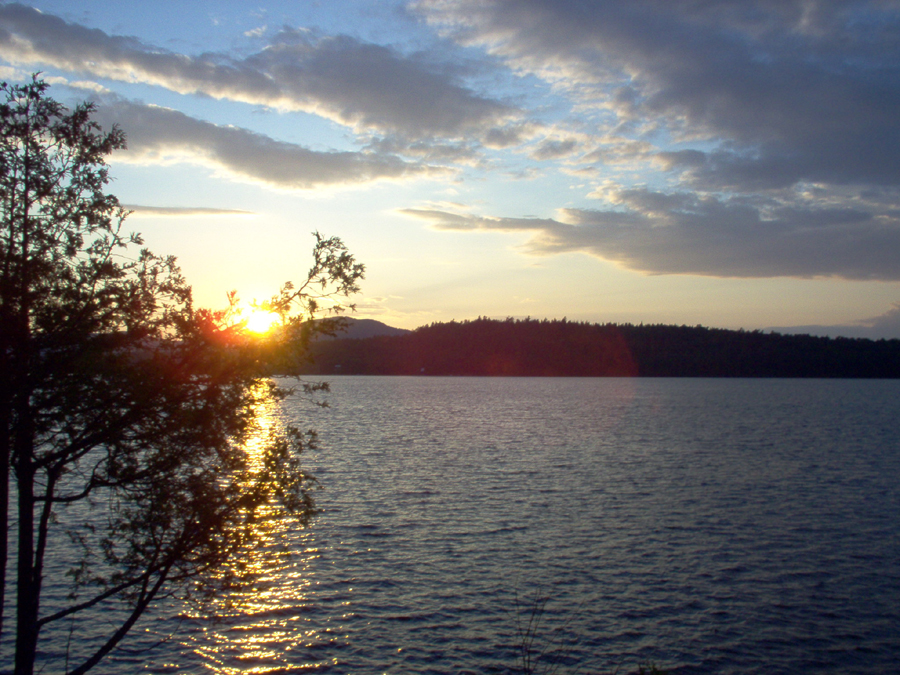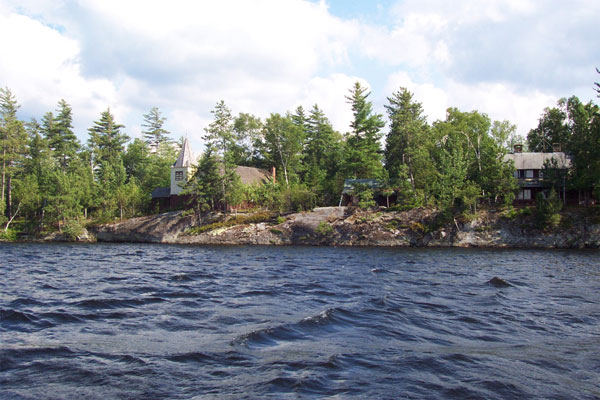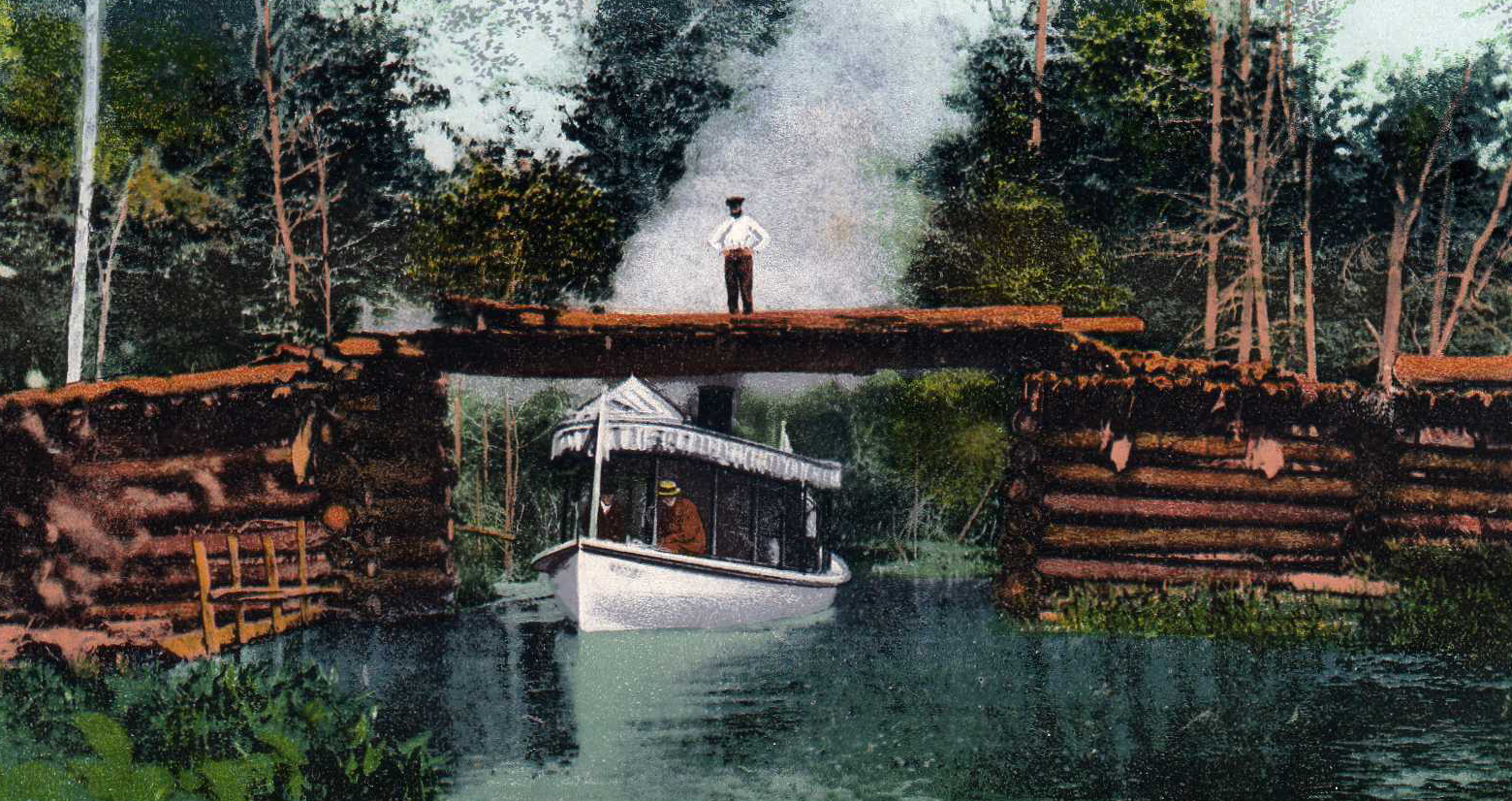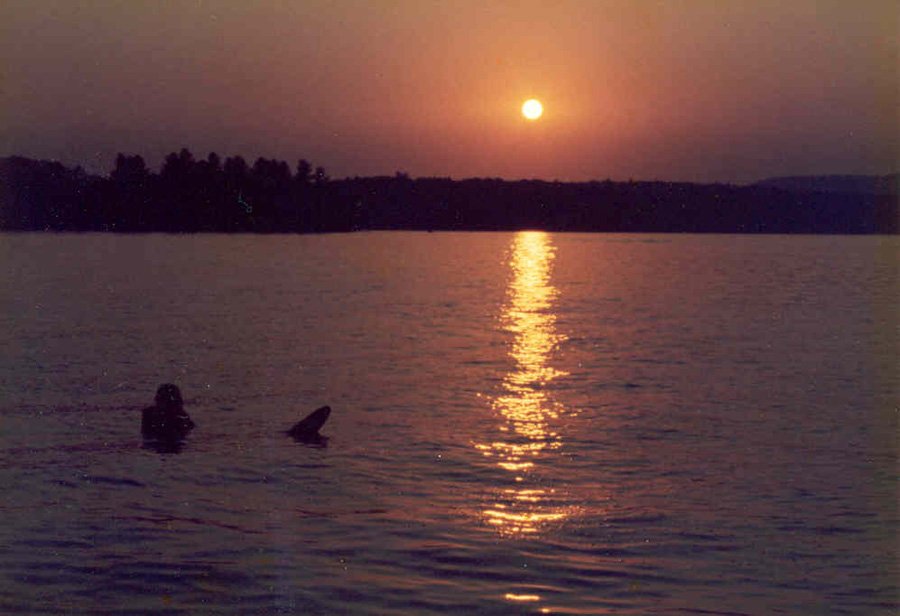Literary Detective Work Solves a Mystery
by WILLIAM WESSELS
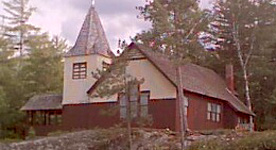 |
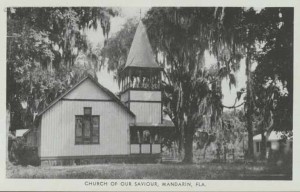 |
| Good Shepherd Raquette Lake NY | Church of Our Saviour Mandarin Florida |
It is a little on the unusual side to find two churches identical in construction and located in widely separated parts of the United States.
Yet, the author discovered this similarity between the Church of the Good Shepherd, on St. Hubert’s Isle at Raquette Lake in the Adirondacks, and the Church of Our Saviour, on St. John’s River in Mandarin, Florida.
Both churches, constructed from the same set of plans, have interesting historical backgrounds. Each is associated with a notable personage in American history.
In Florida, the person was Harriet Beecher Stowe – author of “Uncle Tom’s Cabin” and one of the great figures of pre-Civil War days; in the Adirondacks, the person was William West Durant – son of the railroad magnate, world traveler, builder of one of the first artistic camps in the area, and the man who brought more publicity to the mountains than any other individual.
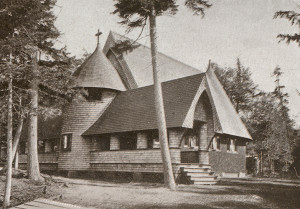 |
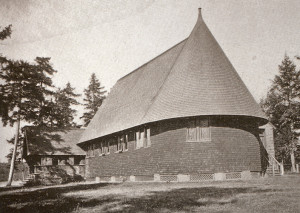 |
St. William’s on Long Point Raquette Lake NY
RAQUETTE LAKE actually boasts of two unusual churches where the only access is by water. Besides the Episcopal Church of the Good Shepherd, there is St. William’s Roman Catholic Church, which was built on Long Point. In the early days of these churches, as of now, both congregations arrived by boat.
[In 2004, it was discovered that all three churches were designed by Josiah Cleveland Cady (1837-1919), who was also the architect of the original Metropolitan Opera House, the American Museum of Natural History and 15 buildings at Yale as well as many churches, including one at the Virginia Hampton Institute, the first college for Native and African-Americans.]
St. William’s – the gift of William West Durant – was dedicated about 1890. The Church of the Good Shepherd was dedicated 10 years previously, in 1880. The latter was also erected largely through the generosity of Durant, who also supplied the construction plans.
Other contributors included the J. Harvey Ladew family, long-time summer residents of Raquette Lake; the Francis H. Stott family of Stottville, NY, whose daughter Janet Lathrop Stott was married to Durant in 1884; and Connecticut Governor Phineas C. Lounsbury.
Collier’s “Skeeter” on left
Those were the days of great social prominence for Raquette Lake, and the islands and shores were studded with the camps of many famous persons. Among them were the island camp of Horace Inman and the camp of publisher Robert J. Collier, home of one of the first speedboats in the Adirondacks. Collier and his 60 hp “Skeeter,” now on display in the Adirondack Museum, would do 25 miles per hour – a fantastic speed in those days!
Because of these and many other persons, there was much social life on the lake. Before long, the church on St. Hubert’s Isle became the setting of the annual bazaar.
Brass cannon from Bluff Point, now at Adirondack Museum
Another unusual feature of this church was the method of summoning the congregation to services. Each Sunday a brass cannon was fired, and the residents set out in small steamers, launches, guide boats, and canoes for St. Hubert’s Isle. It was said to have been a great sight watching the many landings on the crowded shore. This same cannon, incidentally, also is on display at the museum.
The island church was served from 1894 to 1941 by the Rev. William Brown-Serman and the Rev. Stanley Brown-Serman. It was just five years after the dedication of this church that the first rector of the Good Shepherd, the Rev. Montgomery H. Throop II founded the Church of the Transfiguration (Episcopal) at Blue Mountain Lake as a mission. This 1885 church, we shall see, also played a role in the story of the twin churches.
1873 Estey pump organ Raquette Lake
It was at the island church, however, that Dr. Anthony Evans, the noted organist, played during the summer. On Sunday evenings he would visit the Echo Camp cottage of Governor Lounsbury’s niece – Mrs. Griffith – where he thrilled all present with his singing of Welsh hymns.
To learn more about William West Durant, the great benefactor of Raquette Lake and the Adirondacks, we should know of his father, Dr. Thomas C. Durant, an early railroad entrepreneur in the United States. Doctor Durant was a graduate of Albany Medical College, but never practiced. Instead, he became the builder of many of the early railroads in the mid-west.
Doctor Durant was called to Washington at the outbreak of the Civil War by President Lincoln to oversee construction of the Union Pacific Railroad, which was chartered by Congress in 1862. With Durant as engineer in charge, the first rails were laid at Council Bluffs, Iowa, for the eastern terminus.
With the completion of the Union Pacific, Doctor Durant returned to Albany where he became interested in a new railroad venture. He became president of the Adirondack Company that succeeded the Sackett’s Harbor and Saratoga Railroad. The latter had been chartered in 1848 by the New York State Legislature. Durant brought with him two former Union Pacific associates. One of them, Henry Caleb Crane of Yonkers, NY, became treasurer and later played a part in the history of the Florida church.
After the doctor’s death in 1885, William West Durant inherited a vast Adirondack empire, which at one time embraced over 500,000 acres in Essex, Herkimer, Franklin and Hamilton Counties. In 1889, Durant sold his father’s railroad to the Delaware & Hudson Railroad Company and became free to follow his heart’s desire.
In 1878 Durant had begun building the first Artistic camp in the North Woods. The style he inaugurated was somewhat of the Swiss chalet type, and it made an immediate hit with the wealthy. The camps usually had the background of a lovely Adirondack lake. They were built of huge white pine logs, with the bark left on the outside. Inside, the facing of the grain was ‘smooth and varnished.’
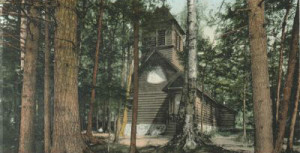 |
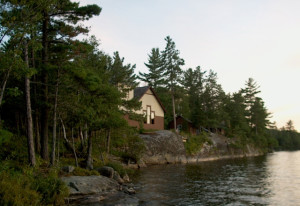 |
| Church at Blue Mountain had a link | Island Church Raquette Lake |
Some of these famous camps are still in existence, such as “Uncas” on Lake Mohegan that became the J. Pierpont Morgan camp; “Camp Sagamore” on Sumner Lake, once the property of the Vanderbilts and now owned by Syracuse University; “Kamp Kill Kare” built for Lt. Gov. Timothy Woodruff of New York State and later sold to Francis Garvan; and the famous “Camp Pine Knot” on Raquette Lake, the home of the Durants.
Durant also headed the group that made possible the construction of the island Church of the Good Shepherd and its presentation to the Albany Diocese. Durant also built the first rectory on the island in 1882 and presented it to the church.
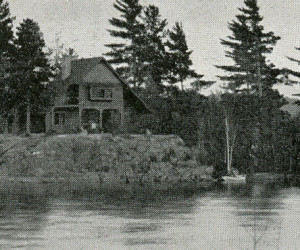 |
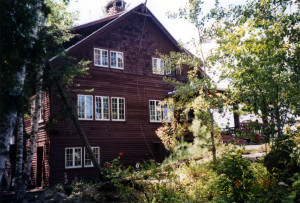 |
| 1882 Rectory | 1918 Rectory |
The present rectory was built by the Brown-Serman family in 1914 [Correction – the original burned down in 1914 and the present one was built in 1918] and is now occupied by the Rev. Ralph Carmichael, priest-in-charge of the Church of the Transfiguration at Blue Mt. Lake. He recently acquired the church property and the rectory, and both will be maintained as an historic place of Adirondack heritage.
AND WHAT OF the second twin church in Mandarin, Florida? This location on the St. John’s River is one of the loveliest spots in Florida. The Church of Our Saviour was made possible by the help of Durant and the Crane family of Blue Mt. Lake.
Mandarin lies beside the St. John’s River in America. Here the ancient Timucuan Indians (800-1763) built the first village at the site. They were followed by the Franciscan Fathers from the convent at St. Augustine, who founded a mission there.
It was here near the mission that the descendants of the Timucuan Indians had planted orange seeds imported from Spain. Later, when Florida passed into the possession of the English, orange plantations were developed and the “Mandarin” orange came into favor. It was here, too, that Harriet Beecher Stowe came in the year 1867.
The famous authoress was married to a Presbyterian Divine who held a professorship in a small Ohio college. But the health of Professor Stowe was not of the best, and his salary modest. In order to make ends meet and to support a growing family, Harriet began writing to augment their income.
She returned to Brunswick, Maine, and began her famous book, “Uncle Tom’s Cabin.” Here she wrote during cold and bitter winter nights, huddled in front of a fireplace with her face scorched and her back a chunk of ice. “Uncle Tom” brought undying fame and considerable wealth to her in the North, but he also brought great wrath in the South.
Her son, Frederick, was badly wounded at the battle of Gettysburg. His wounds did not heal and he looked to alcohol to assuage his pain. In order to get her son away from the saloons, Harriet and her family came to Florida in 1867, after the Civil War ended.
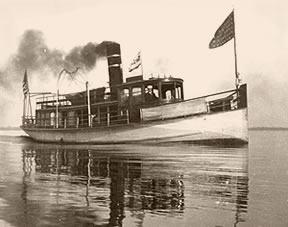 |
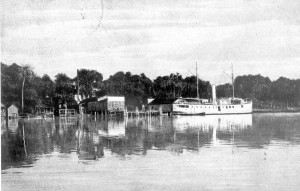 |
| 1893 Steamer Keystone on St. John’s | 1910 Steamer Fishhawk on St. John’s |
They came by boat to Jacksonville, then took a river steamer down the St. John’s River. Harriet leased a cotton plantation – named Laurel Grove – on the banks of the St. John’s in the hope that the outdoor life would help Frederick. This hope faded, however.
She then bought an orange plantation grove at Mandarin. This riverside grove also had live oaks that measured 25 feet around the trunk. Flowers were profuse, and Mandarin was then, as it is today, one of the garden spots of Florida.
Among the neighbors of the Stowes were the Henry C. Cranes, who told of their summer place at Blue Mt. Lake. The families became close friends and the Stowes often sailed the Crane boat down the river. Though her name was anathema in the South, Harriet continued to write for Northern papers. She was one of the first authors to publicize Florida. She soon won the hearts of Florida neighbors and was generous with her purse to local needs.
Doctor Stowe, meanwhile, was conducting Sunday meetings in an old schoolhouse: in the mornings for the Negroes and in the afternoons for the whites. Harriet became interested in providing a church for the community, but the residents were at a loss for plans to build one. Harriet mentioned this problem to the Cranes in the presence of one of their guests – William West Durant.
He told her he might be of help and described the Church of the Good Shepherd. He wrote to Raquette Lake to get the original plans and made some slight modifications for the new church.
Church of Our Saviour Mandarin Florida
The Church of Our Saviour was dedicated in 1884, four years after the island church it was modeled after. The Stowes were Presbyterians, but Harriet was instrumental in having this church become Episcopal since most of her Mandarin neighbors were Anglican Church communicants.
WHEN WE VISITED Mandarin some years ago, we were struck by the resemblance of this church to the one at Raquette Lake, but a search of Northern records failed to turn up any connection. The facts were discovered in Florida only last winter.
It was there, too, that another coincidence caught the eye. The stained glass windows of the Florida church seemed markedly similar to those in the Blue Mt. Lake church. We discovered that the windows for both churches were made by the Tiffany studios in New York City.
The large window in the Mandarin church is a memorial to Professor and Harriet Beecher Stowe that depicts a scene of the St. John’s River at sunset. The similar window of the Blue Mountain church is a mountain scene with a religious motif.
These windows are of a special construction no longer duplicated – in fact they are irreplaceable. Mr. Tiffany himself was the main donor of the Stowe window. Mr. Crane, a member of the first vestry of the Blue Mt. Lake church, was the main donor for his church windows.
A casual visitor would never suspect a link of friendship stretched all the way down the nation’s east coast to help create a church in Florida. Yet, any balmy winter day in Mandarin, the Rev. George Young, Jr., may look down on his congregation knowing that they share an unusual bond of friendship with others enjoying the real winter at Raquette Lake.
~~~~~~~
Published in the TRAILMARKER, JULY-AUGUST, 1962
In 1964, just two years after this article was written, the Stowe window was totally destroyed by Hurricane Dora as was much of the little chapel. A larger church was built on the site, keeping the look and feel of the original, incorporating everything that could be salvaged. The chancel furniture survived the hurricane intact. Each piece has its own interesting history. The altar was carved in St. Augustine, taken to Jacksonville by train, brought to Mandarin by boat and probably, to the church site by horse and wagon. It is a memorial to Mrs. Caleb Henry Crane of Blue Mountain Lake, the wife of the first Senior Warden of the Florida church.
~~~~~~~
In 1947 William Wessels was, along with Harold K. Hochschild, one of the organizers of the Adirondack Museum which opened in 1957. The museum is located on the property of the 19th century resort “Merwin’s Blue Mountain House,” later owned by Mr. Wessels and his wife, Katherine. He was president of the Adirondack Historical Association (1954) and was for many years the Senior Warden of the Church of the Transfiguration in Blue Mountain Lake.
